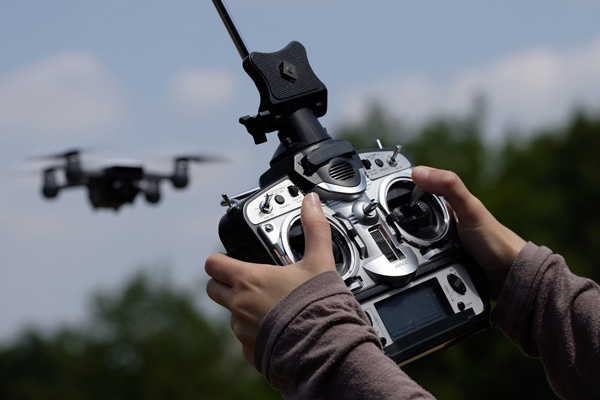North Korea orders mass production of combat drones

[Controlling an aerial combat drone. Photo Credit to Pixabay]
North Korean leader Kim Jong Un has ordered the mass production of kamikaze drones, underscoring a transformative shift in modern warfare driven by the increasing prominence of unmanned aerial vehicles (UAVs).
The directive, issued on November 15, 2024, came after Kim personally supervised testing of the self-detonating drones.
The tests demonstrated the drones’ ability to destroy vehicles and tanks with precision according to state media.
Military analysts suggest this latest development demonstrates North Korea’s expanding capabilities in asymmetric warfare.
This development comes amid a global trend of leveraging drones as cost-effective and precise tools, reshaping military strategies across the world.
The move represents a notable shift from North Korea’s traditional focus on conventional weapons and nuclear deterrence.
Kamikaze drones, also known as suicide drones, are proving to be game-changers on modern battlefields.
Their use has been particularly transformative in conflicts like the war in Ukraine and skirmishes in the Middle East.
For instance, systems such as the Iranian-made Shahed-136 demonstrate the power of these relatively inexpensive tools, which can overwhelm advanced air defense systems through swarm tactics.
This asymmetric advantage has proven particularly effective against sophisticated military infrastructure, allowing nations with limited resources to challenge more technologically advanced adversaries.
The ongoing conflict in Ukraine provides a clear example of the evolution of drone warfare.
Initially, Ukraine used Turkish Bayraktar TB-2 drones for bomb strikes and missile attacks.
Over time, both sides gravitated towards more affordable, disposable kamikaze drones, including modified commercial models outfitted with explosives.
Russian forces have relied heavily on Iranian drones for strikes against Ukrainian military assets and civilian infrastructure.
Military experts estimate that thousands of drones have been deployed throughout the conflict, fundamentally altering traditional battlefield dynamics.
Beyond their offensive capabilities, drones excel in reconnaissance and intelligence gathering.
Real-time updates on enemy movements allow for faster decision-making, significantly shortening the "kill chain" — the process of locating, targeting, and neutralizing an enemy.
This capability has proven particularly valuable in urban warfare scenarios, where traditional surveillance methods may be limited or compromised.
The conflict has also showcased the rising significance of electronic warfare.
Both sides have deployed specialized units to disrupt drone operations and communication networks.
Russian forces have utilized systems like the "Zhitel" and "Silovik-Aero," which can jam signals, neutralize drones, and even pinpoint the location of drone operators for artillery strikes.
Western analysts, including experts from King’s College London, are urging NATO to prioritize training soldiers in counter-drone measures and electronic warfare tactics.
Andrea Gilli, a senior researcher at NATO Defense College, notes that while drones alone are not a "magic bullet," their effectiveness depends heavily on skilled personnel and robust, multi-layered defenses.
North Korea’s military advancement comes amid growing collaboration with Russia.
Reports suggest North Korea has sent 10,000 troops to support Russian forces in Ukraine, potentially allowing Russia to redirect its units to other offensives.
The two nations have strengthened ties through a defense pact, which could lead to Pyongyang acquiring advanced Russian military technology.
This partnership has raised concerns among Western intelligence agencies about the potential transfer of sensitive military capabilities.
Regional security experts warn that as drones become central to modern combat, nations must adapt by developing robust countermeasures and integrating advanced electronic warfare techniques.
Experts say the success of drones in Ukraine and North Korea’s rapid UAV development serve as a wake-up call for military leaders worldwide.
North Korea’s advancements not only elevate regional tensions but also exemplify a broader transformation in warfare.
In this new era, drones are no longer just tools of war—they are redefining its very nature.

- Joseph Shin / Grade 11 Session 7
- Valley Christian High School

![THE HERALD STUDENT REPORTERS [US]](/assets/images/logo_student_us.png)
![THE HERALD STUDENT REPORTERS [Canada]](/assets/images/logo_student_ca.png)
